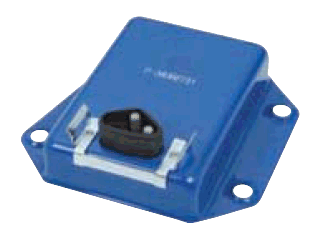WJ is on the right track.
The path for the regulator IGN terminal which is also the voltage SENSE terminal is:
battery -- fuse link -- bulkhead connector -- ammeter circuit -- ignition switch connector -- through the switch -- back out the switch connector -- back out the bulkhead (on the dark blue "ign run" wire -- and to supply several loads, depending on the car
the ignition switch side of the ballast resistor
the alternator blue field wire
the regulator IGN terminal
electric choke if used
distributor retard, idle solenoid on some cars.
Turn the key to "run" with engine OFF. Put one lead of your meter on the battery positive or the starter relay battery stud. Connect your other lead to the blue alternator field lead
You are hoping for a very low reading, the lower the better. Over .3v (three tenths of one volt) means you have voltage drop in the above circuit path.
Your top suspects are the bulkhead connector, the ignition switch connector, the switch, and in rare cases, the ammeter and it's connections, and even more rare, but it HAPPENS is failure of the in harness welded splice.
Read this MAD article for the hows and whys of bulkhead connector problems.
http://www.madelectrical.com/electricaltech/amp-gauges.shtml
Checking the regulator ground path is a little different For that you need the engine running, and some loads on the system, such as headlights. Stick one probe of your meter onto the battery neg. post, and the other probe directly onto the regulator mounting flange. Be sure to stab through any paint, chrome, rust. Once more, you are hoping for a very low reading. The lower the better, zero is perfect. If you show anything here, clean up the back of the regulator, the firewall, and use star washers under the bolts.
When these two voltage drops are fixed, IF the charging voltage is still too high..................
Check the voltage with the engine warm. The regulator changes voltage with temperature. It should be about 13.8--14.2, in no case below 13.5, and in no case above 14.5
If it's out of these limits and the voltage drop problem checks out OK, have the battery load tested, looking for weak cells, or substitute a known good battery.
Finally if that does not get the charging voltage into limits, buy a new quality regulator.




